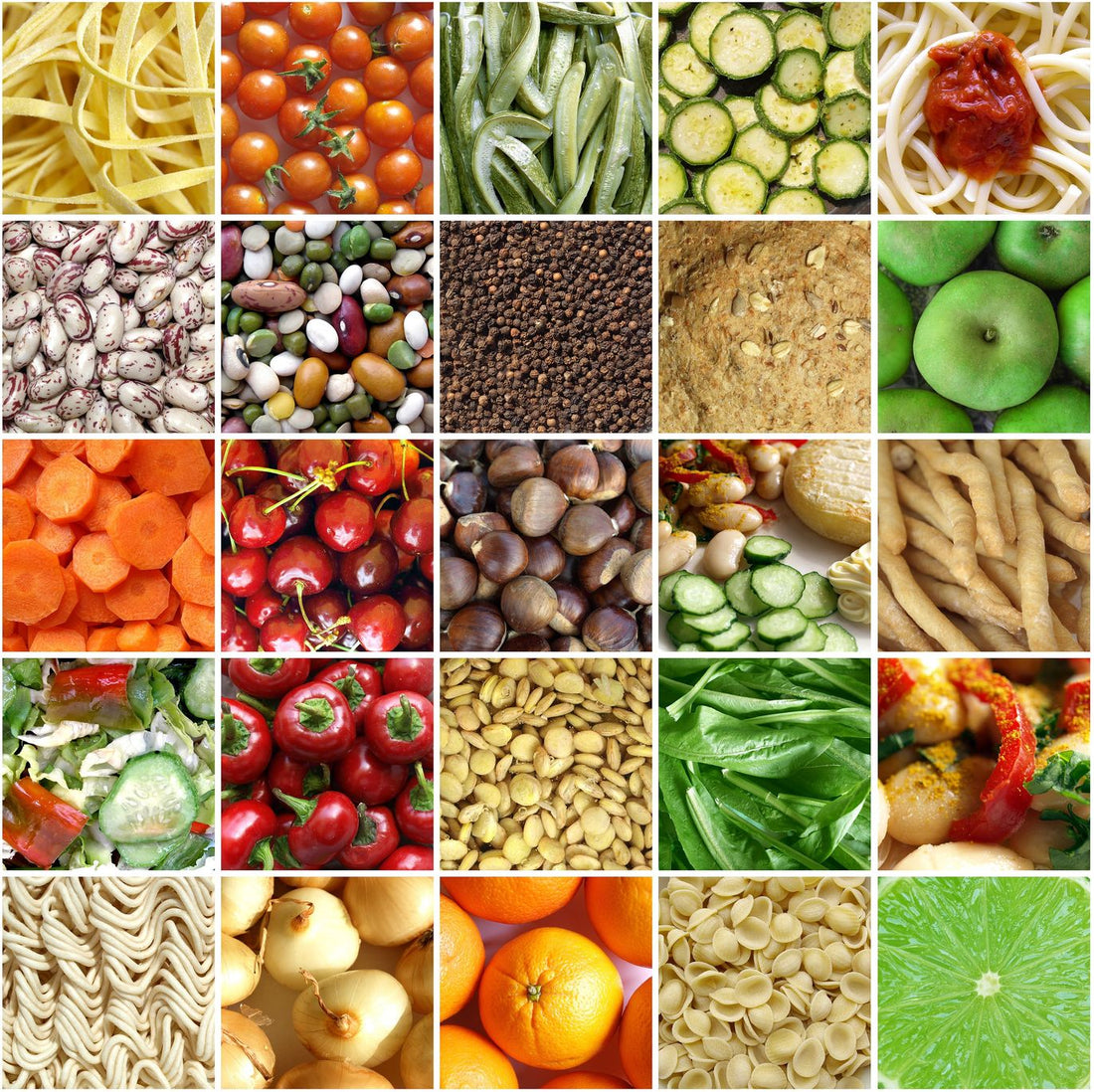Fibre is found in foods that come from plants such as fruit, vegetables and grains. Fibre is an essential component of a healthy diet, that many of us are not getting enough of and considering that fibre can help to prevent heart disease, diabetes, weight gain and cancers and is also invaluable to digestive health, this fact is a more than a little concerning.(1)
Fibre comes in two forms; soluble and insoluble, they each benefit your body in different ways and therefore both types of fibre are essential for a healthy and balanced diet.(2)
What Foods Contain Fibre?
There is a variety of foods that provide soluble and insoluble fibres. Soluble fibres dissolve in the water, helping the stools to become softer and easier to pass the intestine, avoiding constipation. Soluble fibres are found in legumes like cooked beans, chick peas. Additionally, soluble fibres are provided by fruits like pear and apple. Other sources of soluble fibres are grains (rye, barley, oats) and root vegetables like potatoes and carrots. Insoluble fibres are found in nuts and seeds, in vegetables with skins (i.e. potatoes) whole grains (bread, pasta, brown rice) and cereals. (2)
How Much Fibre Should I be Eating?
According to UK studies, most adults are not meeting the dietary fibre recommendation. (4)
It is recommended that adults have a daily fibre intake of up to 30 grams/ day. Studies show that current intakes are less than 20 grams/day for men and even lower for women(5) To put fibre intake in context, the average slice of white bread has around 0.8g/fibre, whereas a slice of whole grain bread has 2.2 and baked beans have 7g per 1/2 tin. Foods highest in fibre include whole grains, beans, avocado, peas and parsnips.
Adolescents and children under the age of 16 have lower fibre needs compared to adults: up to 5-year-olds need about 15grams of fibre/day, between 5-10 year-olds need about 20grams/day and 11-16-year-olds need about 25g/day. Like adults, children’s fibre intake is below the recommended for each age group.(6)
Health Benefits of Fibre
Dietary fibre and Diabetes
A Japanese study among 4400 diabetic patients has shown that increased dietary fibre intake results to improved glycemic control. Thus, diabetics are encouraged to increase their daily fibre intake. (8)
An older study concluded that there is strong evidence to encourage higher consumption of whole grain foods and legumes, as it is beneficial in the prevention and management of diabetes. Therefore, consumption of a variety of carbohydrate foods like cereals, legumes, vegetables and fruits is highly recommended both for the general population and diabetics. (9)
Bowel Cancer
Many studies have linked a high fibre intake to a reduced risk of bowel cancer. (10) Another study related to eating habits and colorectal cancer concluded that high consumption of fibre, combined with low consumption of red meat and alcohol was associated with a lower risk of colorectal cancer.(12) It has been suggested to gradually increase fibre intake in your diet, especially when adding foods such as beans and chickpeas, to allow your body to adjust to a higher fibre intake.(11)
Gastrointestinal health and weight
Dietary fibre improves gastrointestinal function by contributing in the gut microflora. Moreover, dietary fibre is considered a regulator of appetite, food intake and body weight. Specifically, the relation between dietary fibre and satiety is dose-dependent and is related to the fibre component i.e. inulin affects the release of gut peptides and dextrins improve short-term satiety. Another study has shown that individuals dieting who ate greater amounts of whole grain foods had a significant decrease in body fat percentage and waist circumference compared to participants who were on a low-fibre diet. (11)
Dietary fibre and cardiovascular disease
Studies have shown that increasing the insoluble fibre intake results to a lower risk of cardiovascular disease and coronary heart disease. Additionally, a 2014 study concludes that a diet that is high in insoluble fibre could play a role in the prevention and management of diseases like hypercholesterolemia, hypertension and metabolic syndrome. (13)
Healthy tips to improve your fibre intake
According to the US Food and Drug Administration, to improve fibre intake you must choose foods with a higher percentage of dietary fibre i.e. acai berry (44.2g of fibre /100g of content), psyllium husk which is non-calorific and provides 30% insoluble fibre and 70% soluble fibre. Additionally, you should focus on whole grains and replace refined with whole grain versions of foods i.e. cereals. Moreover, choosing fruits and raw salads as snacks increases significantly the dietary fibre intake. You must prefer eating whole fruits instead of drinking juices. Legumes and nuts should be consumed regularly. Another healthy habit that you should adopt is to start your day consuming whole grain cereals, to provide plenty of fibres from the beginning of the day. (14-16)
To sum up, dietary fibre is one of the most important nutrients. Currently, we do not consume as much fibre as recommended, something which is proving to greatly impact on our health. Focus your diet around whole foods - whole grains, fruits, vegetables and beans and gradually increase fibre content, to reduce the occurrence of short-term abdominal distension, discomfort or gas. If you find that after a week or two that your high-fibre diet is still causing uncomfortable bloating or gas, supplements such as psyllium husk powder and acai tablets provide high quality fibre without the effects caused by eating an abundance of fibre rich foods.
Don't Miss Out!
Sign up now to receive our offers, news and weekly articles right to your inbox!
1) https://www.hsph.harvard.edu/nutritionsource/carbohydrates/fiber/
2) https://www.nutrition.org.uk/healthyliving/basics/fibre.html
4) https://www.nutrition.org.uk/bnfevents/pastevents/new-frontiers-in-fibre.html
5) http://onlinelibrary.wiley.com/doi/10.1111/nbu.12141/pdf
6)http://www.nhs.uk/Livewell/Goodfood/Pages/how-to-get-more-fibre-into-your-diet.aspx
7) http://www.webmd.com/diet/guide/fiber-how-much-do-you-need#1
8) https://www.ncbi.nlm.nih.gov/pubmed/24330576
9) https://www.ncbi.nlm.nih.gov/pubmed/15162131
10) https://www.bowelcanceruk.org.uk/about-bowel-cancer/risk-factors/reducing-your-risk/diet/
11) https://www.ncbi.nlm.nih.gov/pubmed/26943307
12) https://www.ncbi.nlm.nih.gov/pubmed/27722153
13) https://www.ncbi.nlm.nih.gov/pubmed/25433109
14)https://www.accessdata.fda.gov/scripts/InteractiveNutritionFactsLabel/dietary-fiber.html
15) https://www.oxfordvitality.co.uk/acai-berry-tablets
16) https://www.oxfordvitality.co.uk/psyllium-husk-powder

